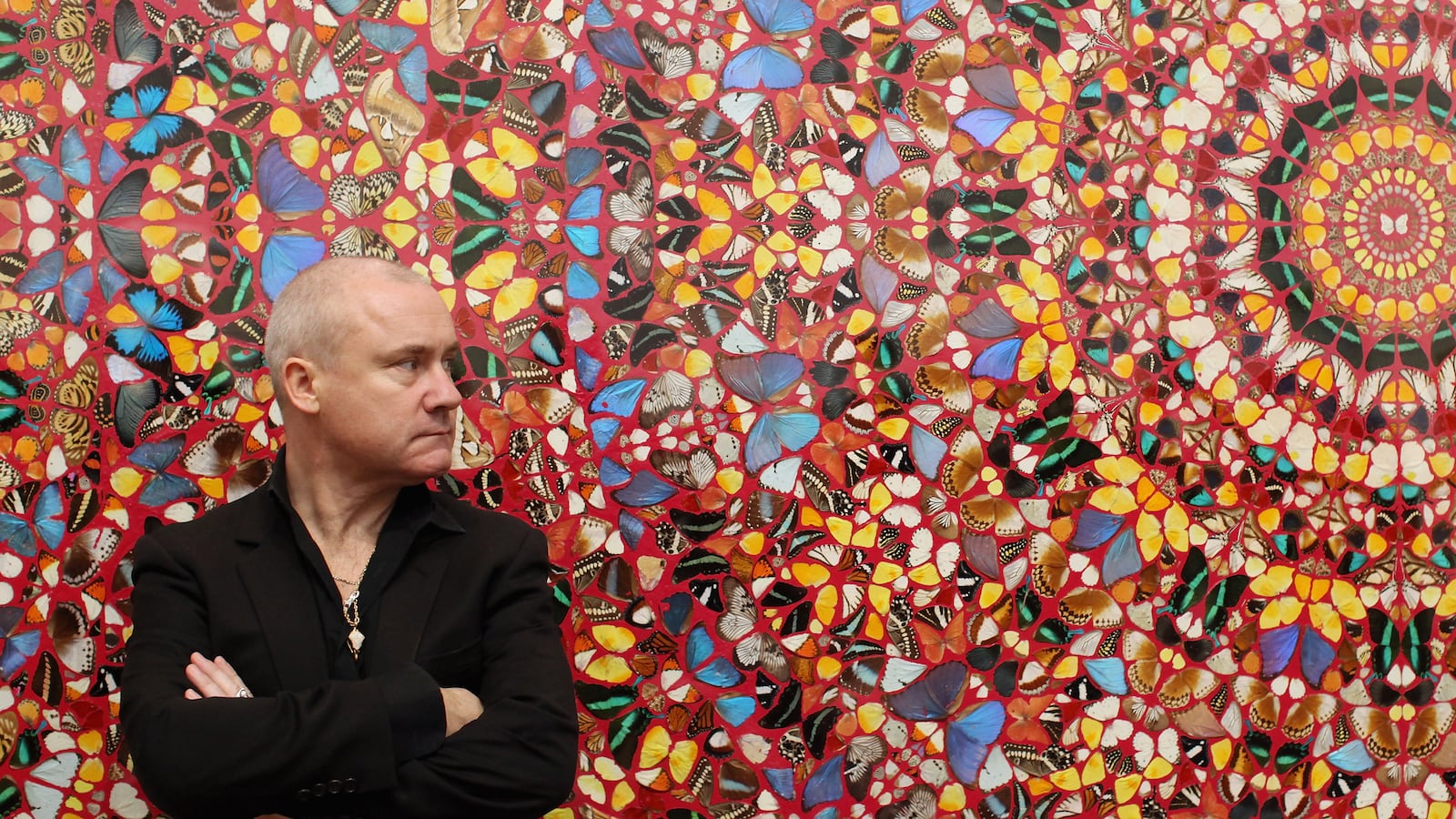Damien Hirst has long been obsessed by drugs. They nearly wrecked his career in the mid 1990s, when he was consuming too many, and then became a recurring, profitable theme in his work.
In 2007, around the time he gave up drinking and drugs altogether, one of his glass medicine cabinets filled with rainbow-hued, bronze-cast pills sold for a record $19.2 million at auction.
That same year, Hirst launched a line of gold and silver pill charm bracelets that are still available on his online shop today, priced between $15,000 and $30,000—and now, the source of a new lawsuit claiming Hirst copied a Canadian artist and jewelry designer named Colleen Wolstenholme.
Filed in Manhattan federal court last week, the suit alleges that the Wolstenholme has been making pill charm bracelets since 1996, and that the pill motif has figured in her other jewelry designs ranging from necklaces and earrings to cuff links.
Wolstenholme has asked that the court order Hirst to stop selling his pill charm bracelets, citing copyright infringement and unfair competition laws. She’s also seeking compensatory damages, including the total revenue generated from profits of Hirst’s bracelets.
But experts say the Wolstenholme doesn’t have a very strong case since the charms on both artists’ bracelets are mini sculptures of generic pharmaceuticals.
“She doesn’t own what the actual pill looks like,” Robert Clarida, an intellectual property lawyer and author of the treatise Copyright Law Deskbook, told The Daily Beast.
There would be a stronger case for infringement if Hirst used Wolstenholme’s pill casting to make his own bracelets, Clarida said, or if the specific charms were arranged in the same order, but the suit makes neither of those claims.
“If the similarity between these bracelets is just the idea of a charm bracelet with pills on it, then there’s no copyright issue,” Clarida said, since only the expression of an idea—not the idea itself—is copyrightable.
June Besek, Executive Director of the Kernochan Center for Law, Media, and the Arts at Columbia Law School, agreed that the designer could only claim copyright protection if the pill charms were arranged in a remarkably similar sequence.
If her work was copyrightable, the next step for the courts would be to look at “fair use,” as they have in recent copyright suits against Richard Prince and Jeff Koons.
“I don’t think this is a fair use case, because he doesn’t need the plaintiff’s work to comment on society’s dependency on pills,” said Besek.
She acknowledged that appropriation artists like Koons and Prince “tend to think that everything out there is allowed to be their material,” but noted that the courts’ have become increasingly tolerant of the kind of appropriation contemporary artists are doing these days.
NYU law professor Amy Adler argued that courts are still ill-equipped to discern fair use, because it requires them to “get into the business of what art means.”
So who is equipped to make that determination?
“Arguably no one, but certainly it seems ridiculous that it’s now increasingly in the hands of courts.”
A spokesperson for Science Ltd., Damien Hirst’s company, wrote in an email to The Daily Beast: “We refute the claim made by Colleen Wolstenholme. Damien Hirst signed his earliest pill work in 1988, long before Wolstenholme created her first jewelry. We will defend any action brought against Damien.”






